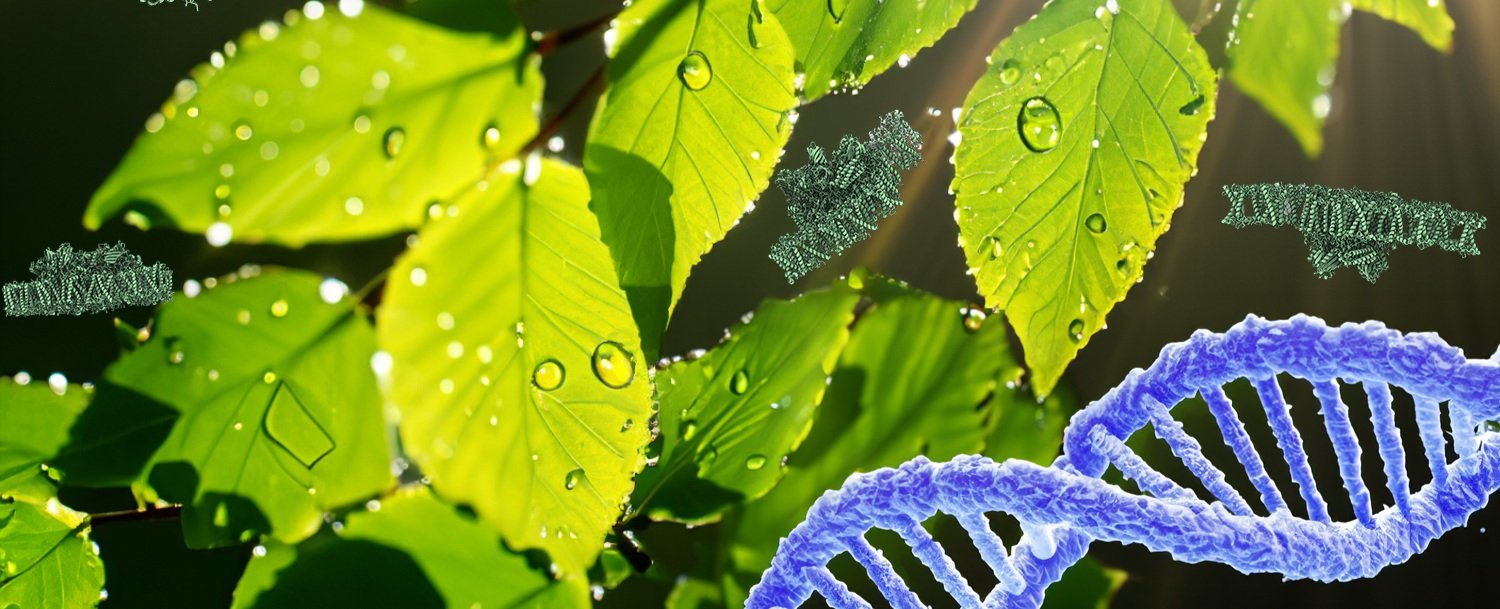
Webster Lab
Visualising how photosynthetic proteins are made
The Webster Lab is located in the John Innes Centre, Norwich, UK.
Our research focuses on understanding:
How are photosynthetic proteins made by plants?
Photosynthesis produces the energy that plants need to grow and the oxygen that we breathe. The proteins that perform photosynthesis are located within the chloroplasts of plants.
Many of the genes that encode the photosynthetic protein are located in the chloroplast genome,. They are transcribed and translated to produce the photosynthetic proteins by a unique and fascinating molecular machinery.
We aim uncover the roles of proteins that essential to the establishment and maintenance of photosynthesis in plants.
Our team uses:
Cryo-EM, Biochemistry, Biophysics and Genetics
To visualise the molecular machinery that performs chloroplast gene expression we specialise in cryogenic electron microscopy (cryo-EM). This allows us to determine atomic models of biological molecules and reveal the dynamic movements that underpin their roles.
A detailed understanding of gene expression mechanisms is a foundation to developing plants that have improved photosynthetic capacity.
Environmental stresses such as heat, drought and salinity impact the ability of plants to do photosynthesis. A molecular understanding of photosythetic protein production is expected to produce new ideas to make crops more robust to a changing climate. Our work is part of the JIC Institute Strategic Programme ‘Building Robustness in Crops’ (BRiC).
Research Publications
Structure of the plant plastid-encoded RNA polymerase (2024).
Vergara-Cruces Á, Pramanick I, Pearce D, Vogirala VK, Byrne MJ, Low JKK, Webster MW. Cell 187(5):1145-1159.e21.
Molecular basis of mRNA delivery to the bacterial ribosome (2024).
Webster MW, Chauvier A, Rahil H, Graziadei A, … Weixlbaumer A. BioRxiv. DOI: 10.1101/2024.03.19.585789
A disease resistance protein triggers oligomerization of its NLR helper into a hexameric resistosome to mediate innate immunity (2024).
Madhuprakash J, … Webster MW, Kamoun S. BioRxiv. DOI: 10.1101/2024.06.18.599586
Structural basis of transcription-translation coupling and collision in bacteria (2020).
Webster MW, Takacs M … Weixlbaumer A. Science 369:1355-59. PMID:32820062
RNA-binding proteins distinguish between similar sequence motifs to promote targeted deadenylation by Ccr4-Not (2019).
Webster MW, Stowell JAW, Passmore LA. eLife 8:e40670. PMID:30601114
mRNA deadenylation is coupled to translation rates by the differential activities of Ccr4-Not nucleases (2018).
Webster MW, Chen YH, … Graveley B, Coller J, Passmore LA. Molecular Cell, 70(6): 1089-1100. PMID:29932902
Current Group Members
Michael Webster
Group Leader
Ángel Vergara-Cruces
PhD Student
Ishika Pramanick
Postdoctoral researcher
David Pearce
Postdoctoral researcher
Jessica Moon
PhD student
Ashley Dudey
Postdoctoral researcher
Billy Tasker-Brown
Postdoctoral researcher
Vijayalaxmi Ambekar
PhD student
Team
December 2023
June 2023
Funding
The Lab is grateful for the past and present support of:
























